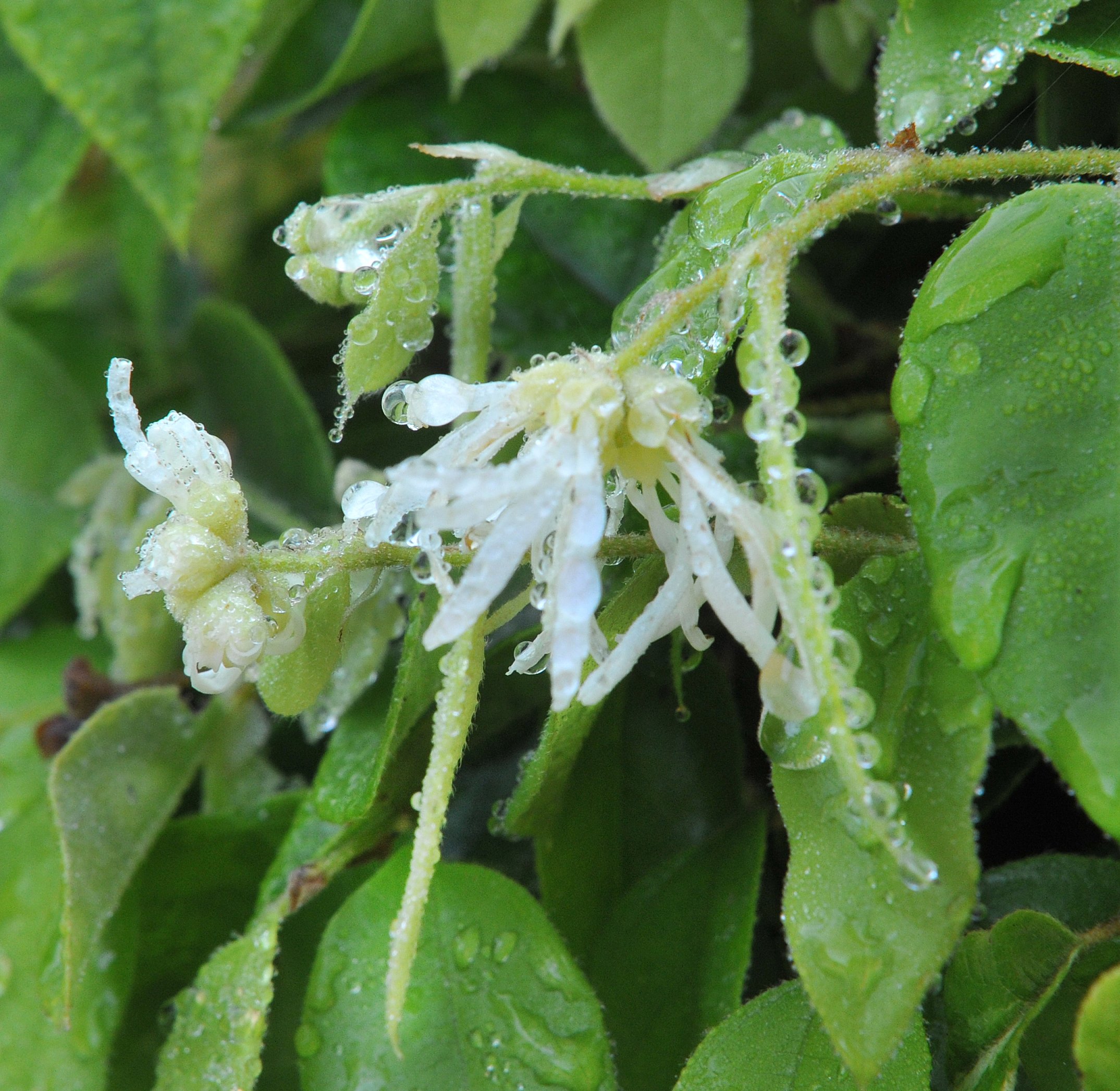
Most are low- to medium-sized rhododendrons whose mounded growth habit frames the peat garden on either side of it. At one end, though, are two specimens of Loropetalum chinense, whose growth habit matches the rhododendrons but also offers a variation in texture.
The Loropetalum foliage is thinner but, covered in bristly hairs, is coarser to the touch. Instead of bell-like flowers, each Loropetalum flower has four strap-shaped white petals, which are multiplied by several buds clustering together, creating a loose tassel effect.
The flowers are like witch hazel and normally appear in late winter or early spring. Similar climatic conditions in autumn can also trigger flowering, as is happening now.
Originating in the milder parts of China and Japan, Loropetalum is said to be hardy to 5degC, but here it has survived 8degC frosts largely unscathed. However, in the wild it can reach up to 3m in height, whereas here it has grown to only about 1.5m in 26 years. Exposed to full sun, the foliage tends to fade in midsummer, but as temperatures drop, a healthy green returns.
Loropetalum is in the witch hazel family and needs well drained, moisture-retentive, acid soil in dappled shade.
- Garden Life is produced by the Dunedin Botanic Garden. For further information contact Doug Thomson.












